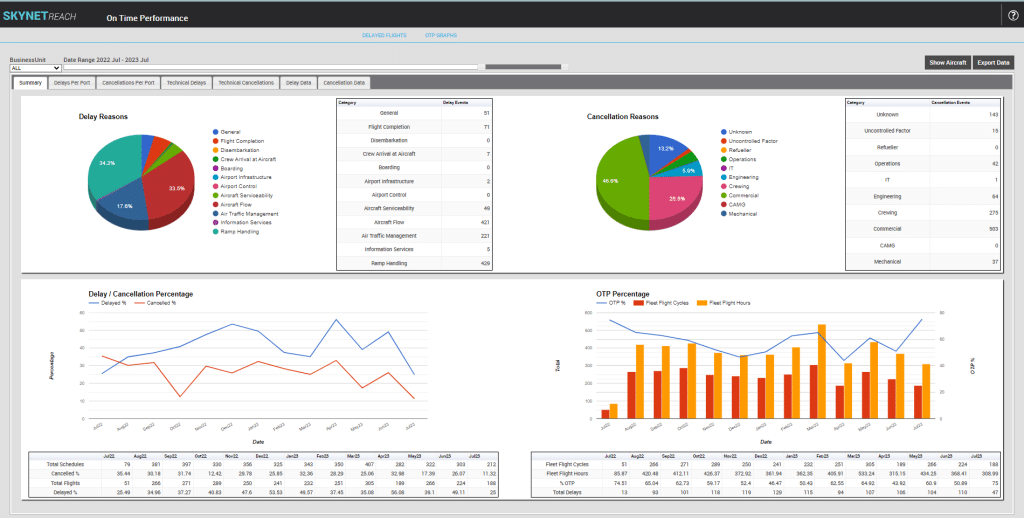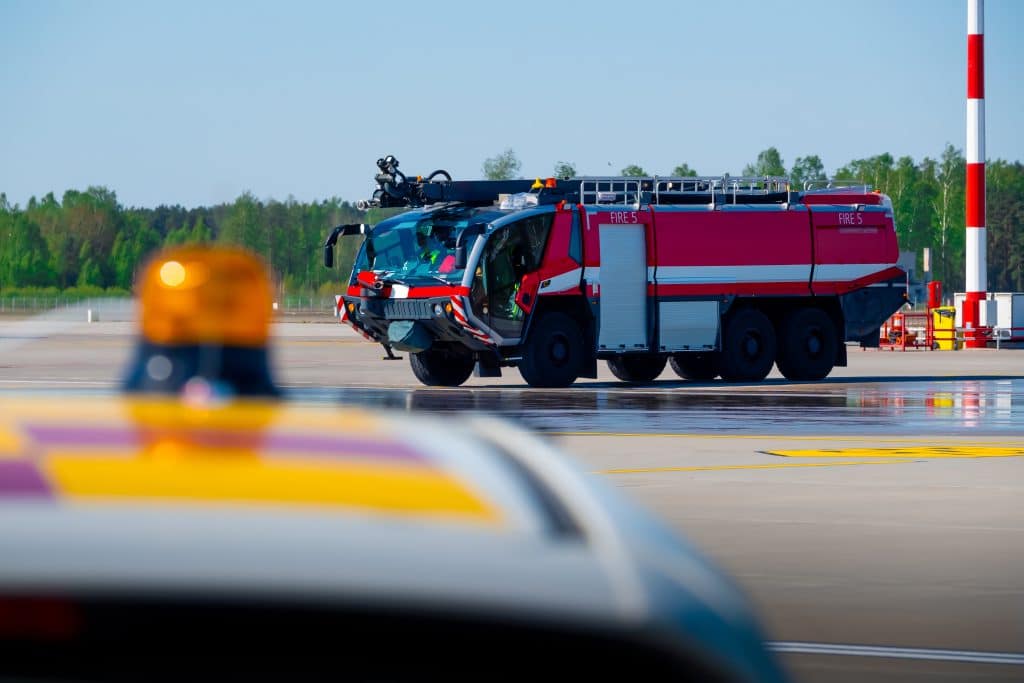Commercial ADS-B and the integration and tactical display of the data it yields aren’t capabilities that enable only airlines and aviation operators. The technologies also offer huge benefits to organisations on the ground whose operations rely on what the aircraft of their service providers and strategic allies are doing.
Think about the outcomes if you had an inexpensive and real-time way to know the status of the aircraft you depended on. What does it mean for your operations, your staff, your stakeholders, your safety management and your bottom line?
What that situation might look for in various aviation-allied sectors is what most of this article will cover. But first, let’s look at the technologies we’re talking about: SkyNet’s commercial ADS-B infrastructure and/or the REACH® Aero Day of Operations software platform that it feeds.
The technology and the solution
SkyNet Commercial ADS-B and REACH® Aero Day of Operations are the one-two hardware-software combo that can simply, quickly and inexpensively enable you to track aircraft to a degree of precision that can cost millions of dollars if attempted with conventional systems.
SkyNet CEO Jon Davis says it he designed the whole ecosystem to be versatile, flexible and simple – yet still powerful.
“There are just so many different ways the flight tracking and data can be used in so many different sectors of the aviation industry and its allied sectors,” Davis says.
“We built these solutions around the idea of using ADS-B and dedicated software as the glue that sticks aviation information together in meaningful, actionable and tactical ways.”
How though? Let’s look at some examples:
Flight planning services
If they could integrate everything from customs clearances, to fuel loads, ETAs, airport fees and flight clearance documentation into a single pane of glass, flight planning services stand to gain considerable efficiencies. This goes double if they are bringing tailored and relevant real-time live data right to the phones or tablets of selected staff members.
Regional airports and airstrips
Regional airports and airstrips face special problems due to fewer resources and less infrastructure. Nonetheless, they often have to guide, control and turn around aircraft that have taken off from major hubs, with all the elaborate support systems and services that that entails. If the airstrip operator had an inexpensive and holistic system doing most of the tracking, compliance and organisational heavy lifting – monitoring everything from aircraft traffic to whether the baggage van is in place to who will be doing the aircraft marshalling – on a single screen, it can save a lot of headaches in one go.
Aircraft refuelling companies
Imagine automatic notifications being sent to refuelling crews of what aircraft will land – exactly where and when – so they can be ready at a JUHY (joint user hydrant installation) to service it. Now, extend that capability to the aircraft itself. As soon as the aircraft is taxiing, a message can automatically be sent to a pilot such as: “Welcome back. Today, you are being refuelled at Bay 8. The per-litre or per-kilo rate is $2.24.”
Aviation regulators
Traditional approaches to flight monitoring – radar, radio and satellite – have tended to require a lot of training, infrastructure or deep pockets. You might lack all three, but managing airspace still requires you to maintain operational intelligence over on every relevant aircraft entering, leaving, taking off and landing. Further, from a royalty and fees point of view, you must be able to track and automatically raise the billing for all the various tolls, fees and charges for access and use of your national air infrastructure. Commercial ADS-B backed by REACH® Aero can do it all simply.
Temporary airstrips
Private companies, such as resources corporations, often have need to set up semi-permanent airstrips. Carved right out of the landscape, these always have limited infrastructure and are expected to be operational as soon as possible. With an ADS-B receiver, a REACH® Aero integration, a solar panel and an iPad you are most of the way to establishing air traffic control.
Firefighting and emergency services
Fighting a wildfire from the air is perhaps the most intense kind of civil aviation. Lives on the line, multiple aircraft with different performance characteristics, crowded airspace, dangerous flying conditions and a rapidly changing operating situation. Managing a high-intensity firebombing racetrack would be so much easier with 1-second interval reporting afforded by a temporary commercial ADS-B receiver that can be deployed as needed.
Clients of aviation companies
Fly-in-fly-out managers, tour companies and any other operation looking after guest and staff travel needs to know where their people are and are going to. Often, these travellers are the critical pieces in a much larger logistical chain that cannot function without them. For the managers handling the travellers, live ETAs, visibility of any possible delays (such as clearance difficulties) and changing weather conditions are vital pieces of information.
Commercial ADS-B for ground operators
In looking at how commercial ADS-B and/or data integration solutions (like REACH® Aero Day Of Operations) can work for you, the first question you must always ask is what risks do you face if an ADS-B receiver you rely on goes down. Unlike a commercial ADS-B receiver, there are rarely any guarantees on a public access ADS-B receiver’s uptime. So, would it be a risk to you, your people or your profit margins if one went offline suddenly and without notice?
If the answer isn’t worth it – if the data really is important to you – then commercial ADS-B enabled by REACH® Aero Day of Operations is a simple answer. Scores of operators like yours are already using it and enjoying the benefits.
“Anywhere where you – an organisation in some way allied to the people flying the plane or helicopter – are waiting, that is an opportunity to better employ the data that the aircraft is already generating,” Davis says.




